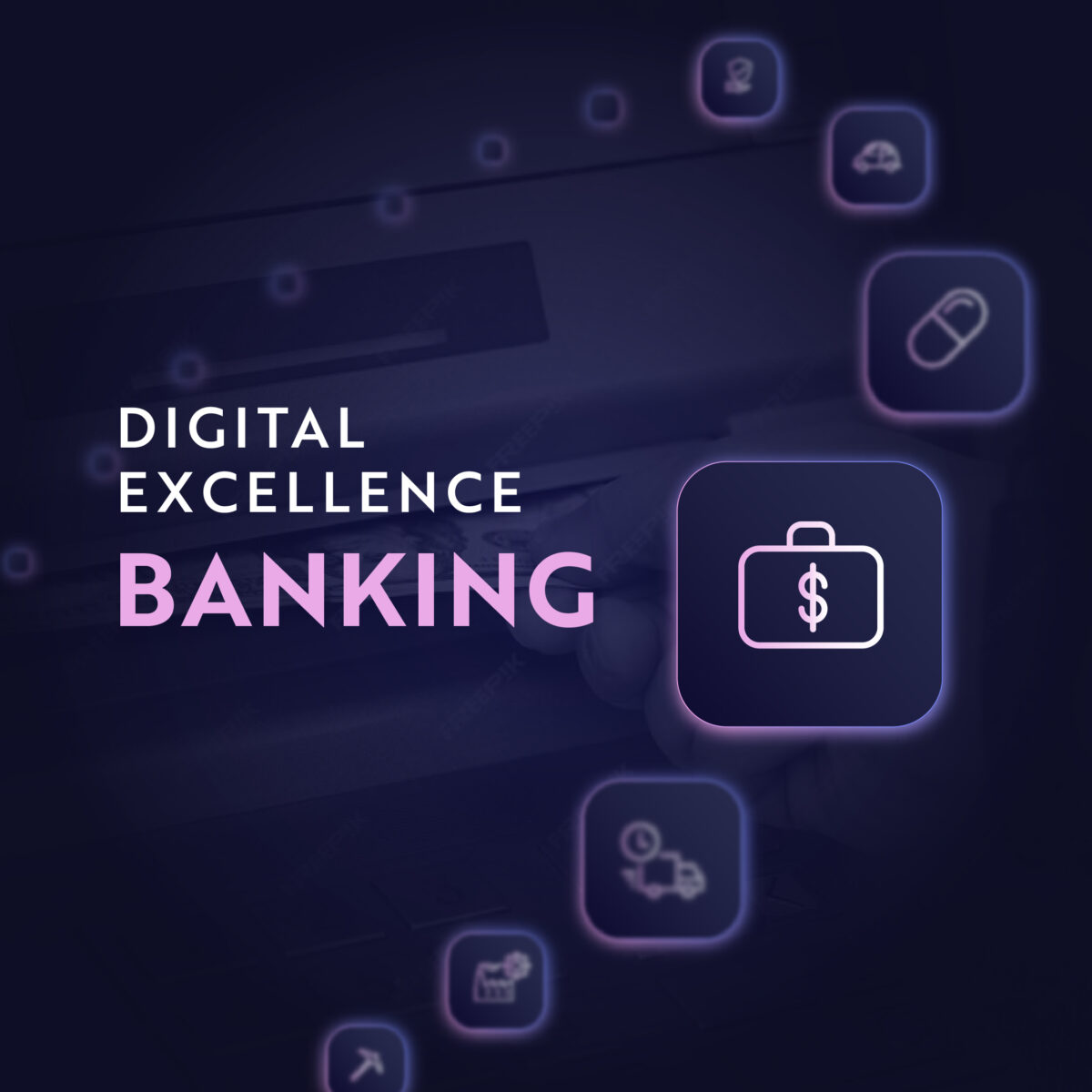
The banking and financial services industry is experiencing a profound transformation driven by digital innovation and evolving customer expectations. As consumers demand more convenient, secure, and personalized services, financial institutions must leverage digital technologies to remain competitive and meet these demands. This article explores how digital transformation is reshaping banking and financial services and provides strategic insights for executives seeking to achieve digital banking excellence and unlock business value.
Impact Assessment: Key Technologies Transforming Banking and Financial Services
- Artificial Intelligence (AI) and Machine Learning:
- Fraud Detection and Prevention: AI algorithms analyze transaction patterns to identify and prevent fraudulent activities in real-time, enhancing security and customer trust.
- Personalized Financial Services: AI-driven analytics enable banks to offer personalized advice, product recommendations, and tailored financial solutions based on customer behavior and preferences.
- Blockchain and Distributed Ledger Technology:
- Secure Transactions: Blockchain technology provides secure, transparent, and tamper-proof records of transactions, reducing fraud and increasing trust in financial systems.
- Smart Contracts: Blockchain enables the automation of contract execution through smart contracts, reducing administrative costs and enhancing efficiency.
- Robotic Process Automation (RPA):
- Operational Efficiency: RPA automates repetitive tasks such as data entry, reconciliation, and compliance reporting, reducing operational costs and improving accuracy.
- Customer Service Automation: Chatbots powered by RPA handle routine customer inquiries, freeing up human agents for more complex issues and enhancing service efficiency.
- Mobile and Digital Banking:
- Convenience and Accessibility: Mobile banking apps provide customers with convenient access to financial services, enabling them to conduct transactions, manage accounts, and access personalized financial advice anytime, anywhere.
- Enhanced User Experience: Digital platforms offer intuitive interfaces, personalized dashboards, and seamless navigation, enhancing the overall user experience.
- Data Analytics and Big Data:
- Customer Insights: Financial institutions leverage big data to gain insights into customer behavior, preferences, and needs, enabling more effective marketing and product development.
- Risk Management: Data analytics enhance risk assessment and management by providing real-time insights into market conditions, customer creditworthiness, and regulatory compliance.
Benefits and Challenges of Banking Excellence
- Benefits:
- Enhanced Customer Experience: Digital technologies enable financial institutions to offer seamless, personalized services that meet evolving customer expectations, driving satisfaction and loyalty.
- Operational Efficiency: Automation and data analytics streamline processes, reduce costs, and improve resource allocation, increasing overall efficiency.
- Innovation and Competitiveness: Digital transformation fosters innovation, enabling financial institutions to develop new products and services that differentiate them in the market.
- Challenges:
- Data Privacy and Security: The collection and use of sensitive customer data raise privacy concerns, necessitating robust data protection measures and compliance with regulations.
- Legacy System Integration: Many financial institutions face challenges in integrating new technologies with existing legacy systems, requiring careful planning and investment.
- Regulatory Compliance: Navigating complex regulatory environments and ensuring compliance with industry standards is critical in the financial services industry.
Strong Use Cases on Banking Excellence
- AI-Powered Fraud Detection:
- Financial institutions like JPMorgan Chase use AI algorithms to monitor transactions in real-time, identifying and preventing fraudulent activities before they impact customers.
- Blockchain for Cross-Border Payments:
- Banks such as HSBC leverage blockchain technology to streamline cross-border payments, reducing transaction times and costs while increasing transparency and security.
- RPA for Compliance Reporting:
- Institutions like Deutsche Bank use RPA to automate compliance reporting processes, reducing manual effort and improving accuracy and efficiency.
Compelling Case Studies with Banking Excellence
Goldman Sachs: AI for Personalized Investment Advice: Goldman Sachs has embraced AI to offer personalized investment advice through its Marcus platform. By analyzing customer data, the platform provides tailored recommendations and financial insights, enhancing customer engagement and satisfaction. This approach demonstrates the potential of AI to transform wealth management and advisory services.
BBVA: Mobile Banking Innovation: BBVA has revolutionized mobile banking by offering a comprehensive suite of digital services, including personal finance management tools, real-time alerts, and seamless transaction capabilities. BBVA’s commitment to digital innovation has enhanced customer experiences and positioned the bank as a leader in the digital banking excellence space.
Main Recommendations for Excellence in Banking
- Invest in AI and Automation:
- Prioritize investment in AI and automation technologies to enhance fraud detection, personalize services, and streamline operations. Embrace data-driven decision-making to drive innovation and efficiency.
- Enhance Customer-Centric Services:
- Leverage mobile and digital platforms to offer personalized, convenient, and seamless financial services. Focus on improving customer experiences and building loyalty through innovative digital solutions.
- Utilize the Digital Maturity Index (DMI):
- Conduct regular DMI assessments to evaluate digital capabilities, identify gaps, and develop strategic roadmaps for transformation. Use these assessments to guide decision-making and prioritize initiatives.
- Strengthen Data Security and Compliance:
- Implement robust data protection measures and ensure compliance with regulatory requirements. Develop a comprehensive cybersecurity strategy to safeguard sensitive customer information.
- Foster a Culture of Innovation:
- Encourage a mindset of experimentation and agility within the organization. Support initiatives that drive digital transformation and empower employees to adapt to changing market dynamics.
Conclusions
The banking and financial services industry is undergoing a digital revolution that presents both challenges and opportunities. By embracing digital technologies and focusing on customer-centric strategies, financial institutions can unlock significant business value and maintain a competitive edge. Executives must prioritize digital transformation initiatives and leverage tools like the Digital Maturity Index to guide their journey toward digital banking excellence. In doing so, they can drive sustainable growth and profitability while delivering transformative financial solutions.




















